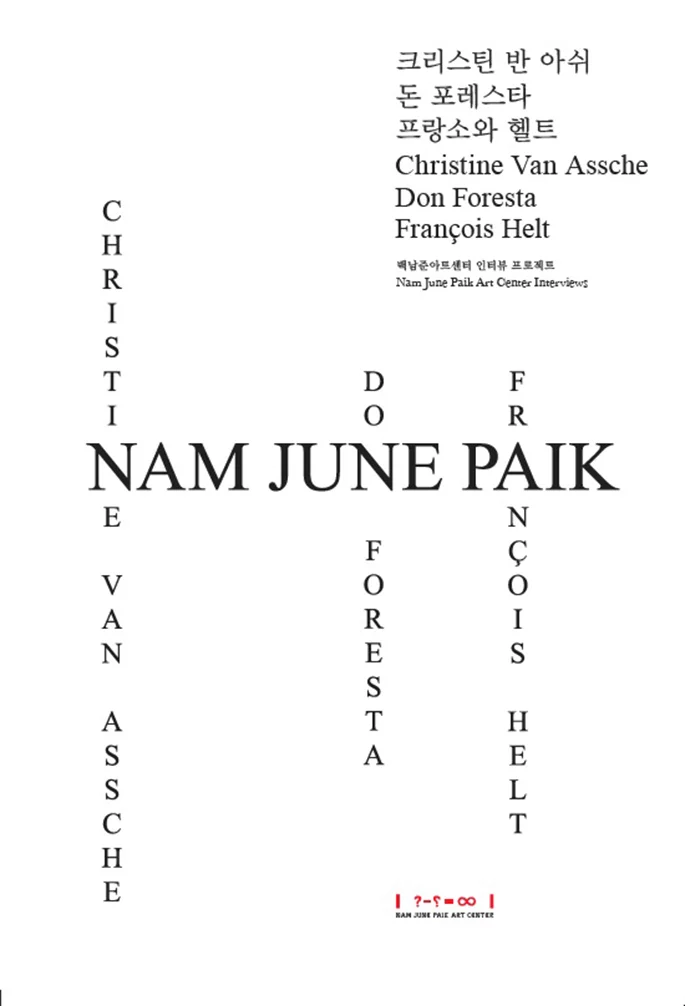Prologue_Park Sang Ae
Interview I_Christine Van Assche
Interview II_Don Foresta
Interview III_François Helt
Exploring Nam June Paik’s art and life from a more multilateral perspective, it is necessary to draw on not only written materials but on oral sources from those who engaged with Paik directly or indirectly. The interview series was hence initiated in 2008, and comprises interviews of figures related to Paik in different ways, such as artists, theorists, curators, friends, technicians and collectors. Aiming at offering oral history interviews in a written format, Nam June Paik Art Center plans to annually publish a monograph series, titled as Nam June Paik Art Center Interviews. The first issue of the series dealing with interviews with Dr. Wulf Herzogenrath, a former Director of Kunsthalle Bremen has been published in the autumn of 2012. The second issue, interviewing with three media art conservation specialists, Hanna Holling, Dr. Bernhard Serexhe, and Dr. Glenn Wharton, covered the topic of media art conservation focusing on Nam June Paik’s artwork, and published in 2013. The third issue covers interviews with Peter Brotzmann and Takehisa Kosugi, sharing memories about Nam June Paik in the 1960’s, working together for Paik’s exhibition as well as concerts. The fourth issue includes interviews with Mary Bauermeister and correspondence between Nam June Paik and Mary Bauermeister. The fifthe issue comprises interviews with Shuya Abe and Jung Sung Lee, who are life-long technical collaborators of Paik, and sketches of Paik’s works.
Christine Van Assche worked with Nam June Paik for Good Morning Mr. Orwell on the spot as the curator of Centre Pompidou, and she recalls the artist Nam June Paik as a curator. We can hear stories behind installing Moon is the Oldest TV and TV Fish, Paik’s famous early works, and Tricolor Video, a site-specific installation. The relationship between Nam June Paik and the Centre Pompidou, one of the first art museums that created video art divisions, will enable us to see how art museums accepted the new media. By the time when video art began to appear in France, Don Foresta, who changed his job due to Nam June Paik, played an important role as the director of American Culture Center. The former administrator in art opened up a new chapter in his life as an artist, a decision largely influenced by Paik. Foresta observed the beginning and growth of video art in France, and he calls Nam June Paik “a missionary in video art.” He tells us the past of Nam June Paik, an artist who didn’t just focus on his works but exerted himself to let more people get to know video art. François Helt installed Nam June Paik’s works together for Paik’s exhibition in Paris. Helt spent not a long time with Nam June Paik, but remembers Paik as one of the important people in his life. The group exhibition1 held in Musee d’Art Moderne de la Ville de Paris was the beginning of Paik’s meeting with French audience which continued at video exhibitions in the Centre Pompidou and other galleries. Nam June Paik’s days in France allow us to experience the exhibitions when galleries began to embrace the new media and the response of audience of the time.





